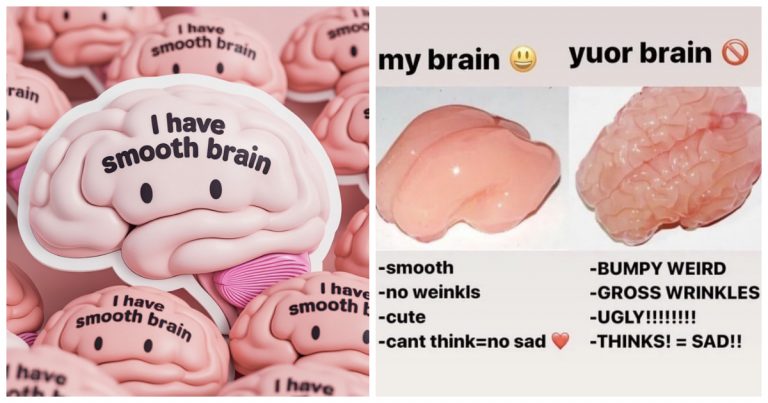Mewing Meme Explained: How Jawline Tips Became Internet Comedy Gold
Mewing Meme Explained: What started as a simple jawline technique has quickly turned into one of the internet’s funniest and most talked-about trends. In this article, you’ll discover what mewing really is, its origins, and how it evolved from a serious self-improvement tip into a hilarious meme sensation.
We’ll also explore where mewing memes pop up the most online and why this quirky trend continues to capture the imagination—and laughs—of people around the world. Get ready to dive into the entertaining world of mewing culture!
#1 What Is Mewing and Where Did It Come From?
Mewing is a slang term for a tongue exercise where you rest your tongue against the roof of your mouth. Some people say this simple practice can actually change the shape of your jawline over time. The idea behind mewing was popularized by British orthodontist Dr. Mike Mew, who launched the Orthotropics YouTube channel on October 27th, 2011. Not long after, on February 18th, 2012, the channel posted a video called “What Is Orthotropics,” explaining Dr. Mew’s approach to facial growth and jaw development.
Though the technique dates back to the 1970s with Dr. John Mew, Mike Mew’s videos helped bring mewing to a wider online audience, especially young people looking for natural, non-surgical ways to improve their jawline and breathing. Since then, mewing has grown into a popular topic in self-improvement circles and social media communities.
#2 How Mewing Turned Into a Meme?
Mewing became a meme because people started making fun of the big claims and over-the-top videos about it online. It’s both a real practice and something that gets joked about a lot on YouTube, TikTok, and in self-improvement groups, especially those focused on “alpha male” ideas.
Here’s why mewing caught on as a meme:
- Exaggerated before-and-after photos: Early supporters shared pictures showing huge changes in their faces just from mewing. But studies found these claims weren’t backed by real science. Because of this, many people started making jokes about how unrealistic those promises were.
- Funny, over-the-top videos: Creators made videos with dramatic music and glowing jawlines, pretending that mewing could instantly give you a “Greek god” face. These silly edits showed how some of the hype didn’t quite add up.
- Connection to “alpha male” culture: Mewing became popular in online groups focused on looking strong and confident. Because of this, many critics and meme-makers used mewing to poke fun at extreme self-improvement trends and the idea of trying too hard to be “alpha.”
#3 How the Mewing Meme Spread Through YouTube and Media?
Several key YouTubers helped fuel the spread of mewing and brought it to a wider audience. On December 19th, 2018, Judy Neptune uploaded a personal video titled “How I Changed My Facial Bone Structure by Mewing,” which attracted over 134,000 views and sparked a lively discussion with more than 660 comments before it was eventually removed. Shortly after, on January 19th, 2019, Astro Sky released a beginner-friendly video called “Mewing For Beginners,” making the technique accessible to many newcomers curious about facial restructuring.
Around the same time, mainstream media began taking notice of this growing trend. In February 2019, the Coventry Telegraph published an article describing mewing as the latest health craze sweeping through Instagram and YouTube communities. This coverage helped push mewing beyond niche online circles and into broader public awareness. Adding to the momentum, YouTuber Brett Maverick uploaded his own video on the subject on February 22nd, 2019, contributing further to the trend’s rapid growth.
Together, these influencers and media outlets played a crucial role in turning mewing from a specialized orthodontic idea into a widely recognized internet phenomenon, blending genuine interest with viral appeal.
#4 FAQs About Mewing and the Mewing Meme
1. Can Mewing Actually Change Your Face?
Mewing might help improve facial posture in young people, but there’s little scientific proof it can cause big changes in adult faces. The dramatic jawline transformations you see online are mostly unproven.
2. Who Started the Mewing Meme Trend?
The trend began with Dr. Mike Mew’s videos about mewing and orthotropics, but it became a meme when people made funny and exaggerated videos on TikTok, Reddit, and YouTube.
3. Is Mewing More Popular in Certain Communities?
Yes. Mewing is especially popular in self-improvement, fitness, and “looksmaxxing” groups, mostly among young men trying to improve their appearance naturally.
4. Are There Risks to Mewing?
If done gently, mewing is generally safe. But pushing too hard or using the wrong technique can cause jaw pain or muscle strain.
#5 Conclusion
Internet beauty hacks like mewing mix scientific-sounding claims, personal stories, and memes to become popular and sometimes controversial. What starts as a small tip can quickly turn into something millions of people believe or joke about online.
One key reason is that people are drawn to easy solutions that sound scientific but may lack strong proof. A 2023 study from the University of Edinburgh found that online users often prefer simple fixes that avoid complex medical advice, which can lead to hopeful beliefs—even when the facts aren’t clear.
Combined with viral stories and meme culture, these hacks spread fast and take on a life of their own, showing that online popularity depends more on how well something catches on than on whether it’s true.









